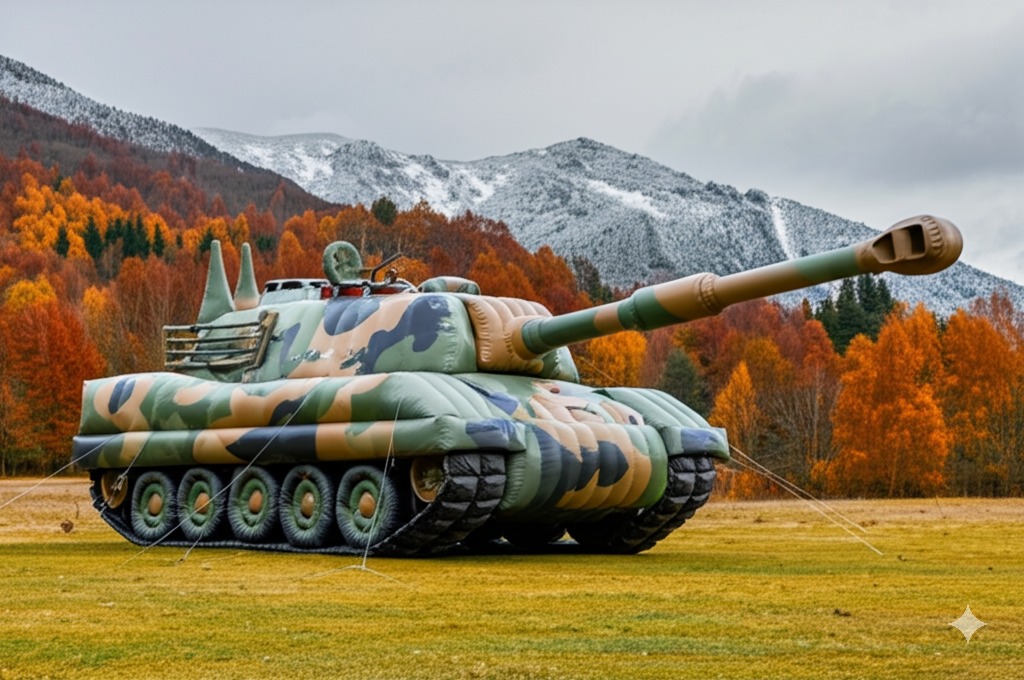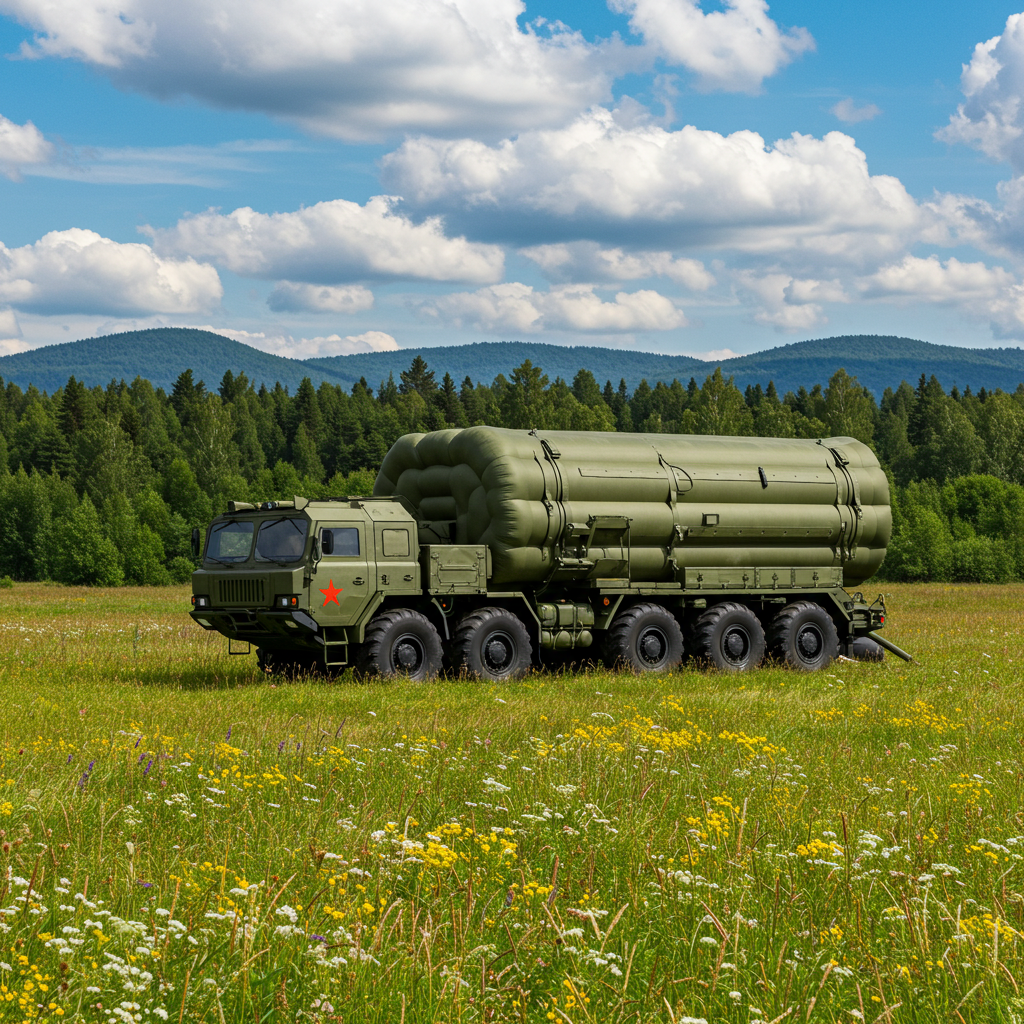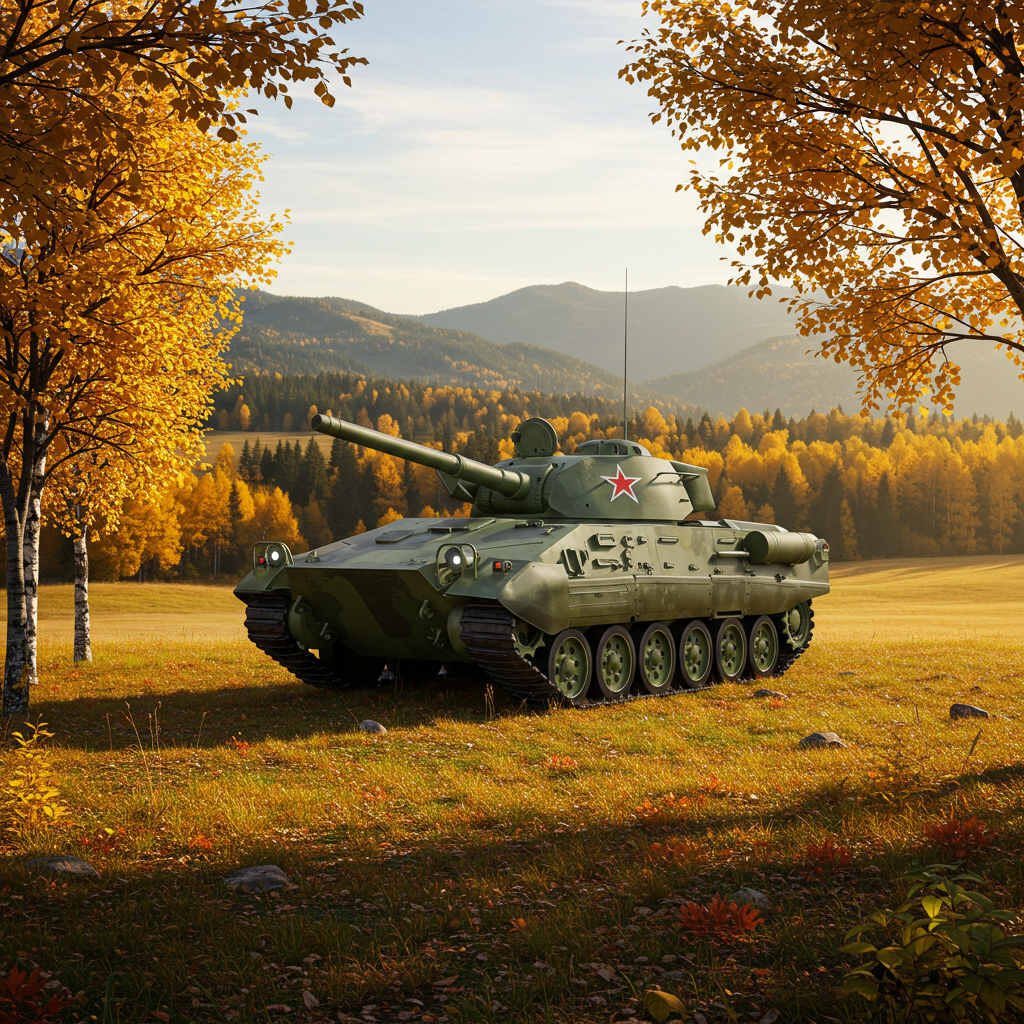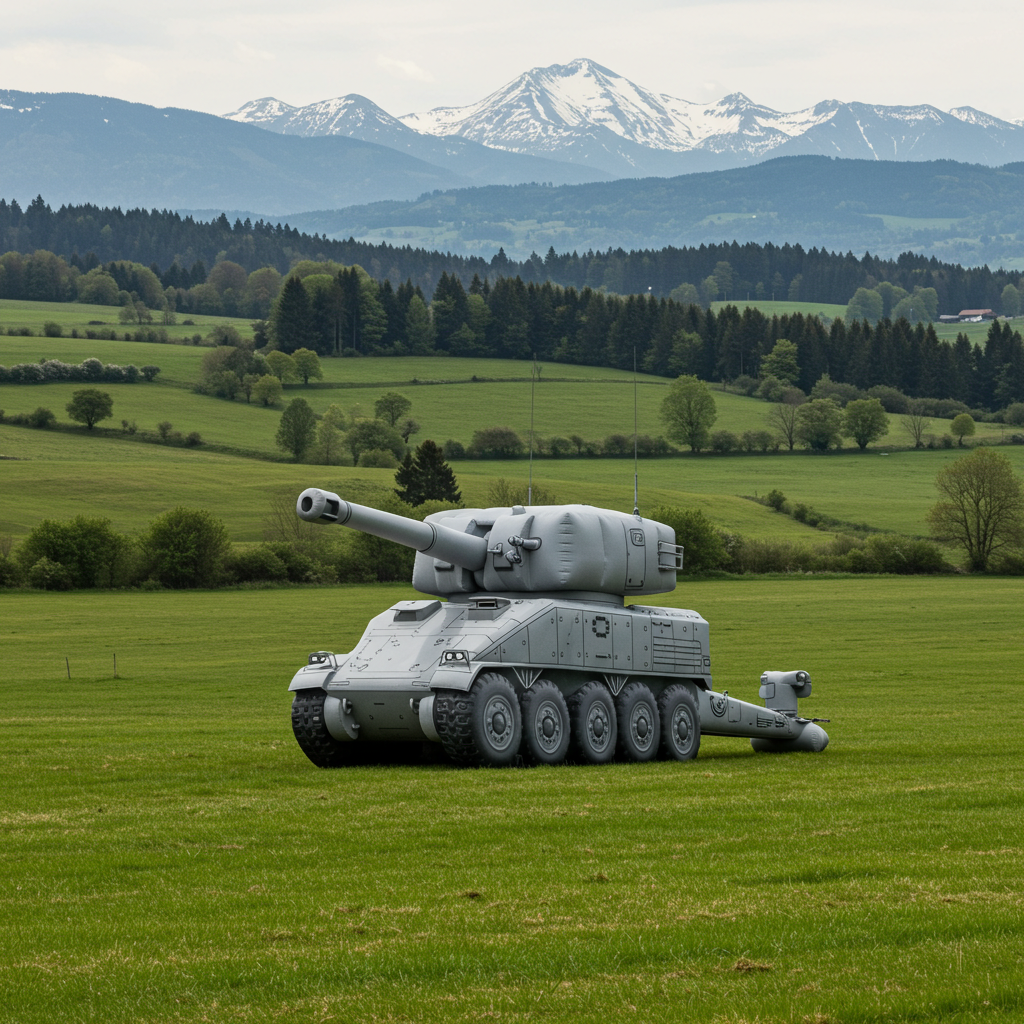Inflatables dummy decoys of military vehicles
In the military field, the word deception refers to the strategic and tactical principles and maneuvers, and the technical means intended to mislead the adversary.
Deception encompasses dissimulation and simulation in military stratagem.
In the shadowed chessboard of warfare, where every move courts victory or ruin, inflatable dummy decoys of military vehicles, tanks, and aircraft stand as masters of deception.
Cheap, portable, and eerily lifelike, they sow confusion, waste enemy resources, and shield real assets from harm.
Some examples : AS90, BM-30 SMERCH, BMP-2, BMP-3, BTR-80, CAESAR 6×6, CHALLENGER 2, CSS-5, F-16, FV107, K9 THUNDER, LEOPARD 2A4, M1 ABRAMS, M142 HIMARS, M270 MLRS, M-60, PANTSIR-S1, PATRIOT, SA-15, SA-17, SA-19 GRISON, SA-21, SA-6 GAINFUL, SA-8, SIMPLE TANK, SU-27, SU-30, T-72, T-80, T-90, TATRA STARKOM, UH-60
Inflatable military tanks
- T-72
- T-90
- M1 Abrams
- 2K22 Tunguska • ZSU-23-4 Shilka • BMP-2
- BMP-3
- ZBD-5
- MBT-3000
- Sherman
- SA-19
Inflatable military vehicles
- 9K33 Osa (SA-18 Gecko)
- Pantsir-S1 (SA-22 Greyhound)
- Toyota Landcruiser
w/ZU-23 Anti-aircraft Gun - S-400 Triumph
- Scud Missile Launcher
- 2K12 Kub (SA-6 Gainful)
Missile Launcher - YJ-12 Missile Launcher
- HQ-7 Missile & Radar Vehicles
- Humvee Multipurpose Vehicles
- THAAD Surface to Air Missile System
- SA-21 Growler
Inflatable military aircrafts
- F-15 Jet
- F-16 Jet
- F-22 Jet
- F-35 Jet
- Sukhoi-30 Jet • Mig-29 Jet
- Mirage 2000 Jet •
- Blackhawk
- AH-64 Apache
Summary of Advantages of Inflatables dummy decoys of military vehicles
- Rapid Deployment: Erected in minutes, creating instant battlefield illusions.
- Cost-Effectiveness: Low-cost fakes drain enemy resources expensively.
- Deception: Misdirects ISR, sowing chaos in enemy plans.
- Portability: Lightweight, movable for dynamic ops.
- Realism: Multi-spectral mimicry fools drones, satellites.
- Asset Protection: Sacrificial decoys shield real forces.
- Strategic Flexibility: Integrates with modern tactics, enhancing agility.
- Future Potential: Evolves with tech for hybrid warfare dominance.
Why deploy dummy military decoys in the field to deceive and break the morale and motivation of your hostile enemies who seek to harm you ?
- Gain tactical and strategic advantages,
- Deceive and distract your enemy,
- Protect your troops and equipment, save lives,
- Exhaust enemy weapons resources economically,
- Be highly mobile,
- Train and practice,
- Reduce your military training costs.







Warfare is a theater of guile, where the feint often outshines the frontal assault. Inflatable dummy decoys—counterfeit tanks, trucks, and jets—embody this ancient art, blending subterfuge with modern engineering to tilt the scales of battle. These blow-up impostors, born from the exigencies of World War I and refined through decades of conflict, have morphed from crude wooden shells into sophisticated mimics that dupe even cutting-edge sensors. Today, they’re wielded by armies worldwide, from NATO’s training grounds to Ukraine’s contested fields, proving that illusion can be as potent as steel.
Their allure lies in their simplicity and impact. Lightweight and swift to deploy, they conjure phantom armies in hours, forcing foes to squander bombs, missiles, and time on shadows. In the North African desert of 1941, British “spoofs” bamboozled Rommel; in 1944’s Operation Fortitude, they misled Hitler’s generals. Now, with thermal emitters and radar reflectors, they confound drones and satellites, marrying low cost with high stakes. This section sets the stage, weaving terms like “force multiplier,” “tactical deception,” and “battlespace obfuscation” into a tapestry of their strategic ascent, priming readers for a deep dive into their myriad benefits.
In the relentless cadence of war, where the first strike often dictates the outcome, rapid deployment is a commander’s holy grail. Inflatable dummy decoys of military vehicles, tanks, and aircraft deliver this with breathtaking alacrity, conjuring illusions of might in mere minutes. These air-pumped phantoms—erected faster than a mortar crew can reload—offer militaries the power to reshape the battlespace instantly, sowing chaos among foes and buying precious time for real forces to maneuver. Their speed is not just a logistical triumph; it’s a strategic fulcrum, tilting engagements before the enemy can recalibrate.
The process is a marvel of efficiency. A typical inflatable decoy—say, an M1 Abrams replica—arrives in a duffel-sized pack, weighing under 50 pounds. With a portable compressor or CO2 canister, two soldiers can inflate it in 15 minutes, complete with turret, tracks, and camouflage netting. Contrast this with the days required to haul and assemble a wooden mockup or the weeks to build a fake airfield, and the advantage leaps into focus. In a snap offensive—imagine a Russian thrust across Ukraine’s Donbas—an inflatable T-90 cluster can spring up near a frontline FOB (forward operating base), drawing drone strikes while real armor flanks unseen. The jargon—“time-to-target,” “rapid stand-up,” “deception tempo”—encapsulates this swiftness, where every tick of the clock amplifies the ruse.
This instantaneous illusion has historical roots. During World War II’s North African Campaign, Royal Engineers churned out two inflatable Shermans daily, erecting fake tank regiments between April and June 1941 to baffle Axis recon. In 20 minutes, a deflated shell became a menacing silhouette, towed by jeeps to mimic movement. Fast forward to 2023 in Ukraine: inflatable HIMARS decoys—deployed in under an hour—lured Russian Iskander missiles to empty fields, per reports from Kyiv’s forces. The term “expeditionary deception” fits, as speed morphs static defenses into dynamic traps.
Deception is decoys’ core—phantoms that scramble enemy plans. In Fortitude, inflatable Shermans faked an invasion at Pas-de-Calais, tying up German divisions. In Ukraine, T-72 decoys lure drones, masking real moves. Paired with fake radio (SIGINT bait), they sell the lie. The “fog of war” thickens, per Clausewitz, as ISR falters. The full section would unpack Ghost Army ops, modern drone footage, and terms like “HUMINT spoofing” or “battlespace obfuscation.”
